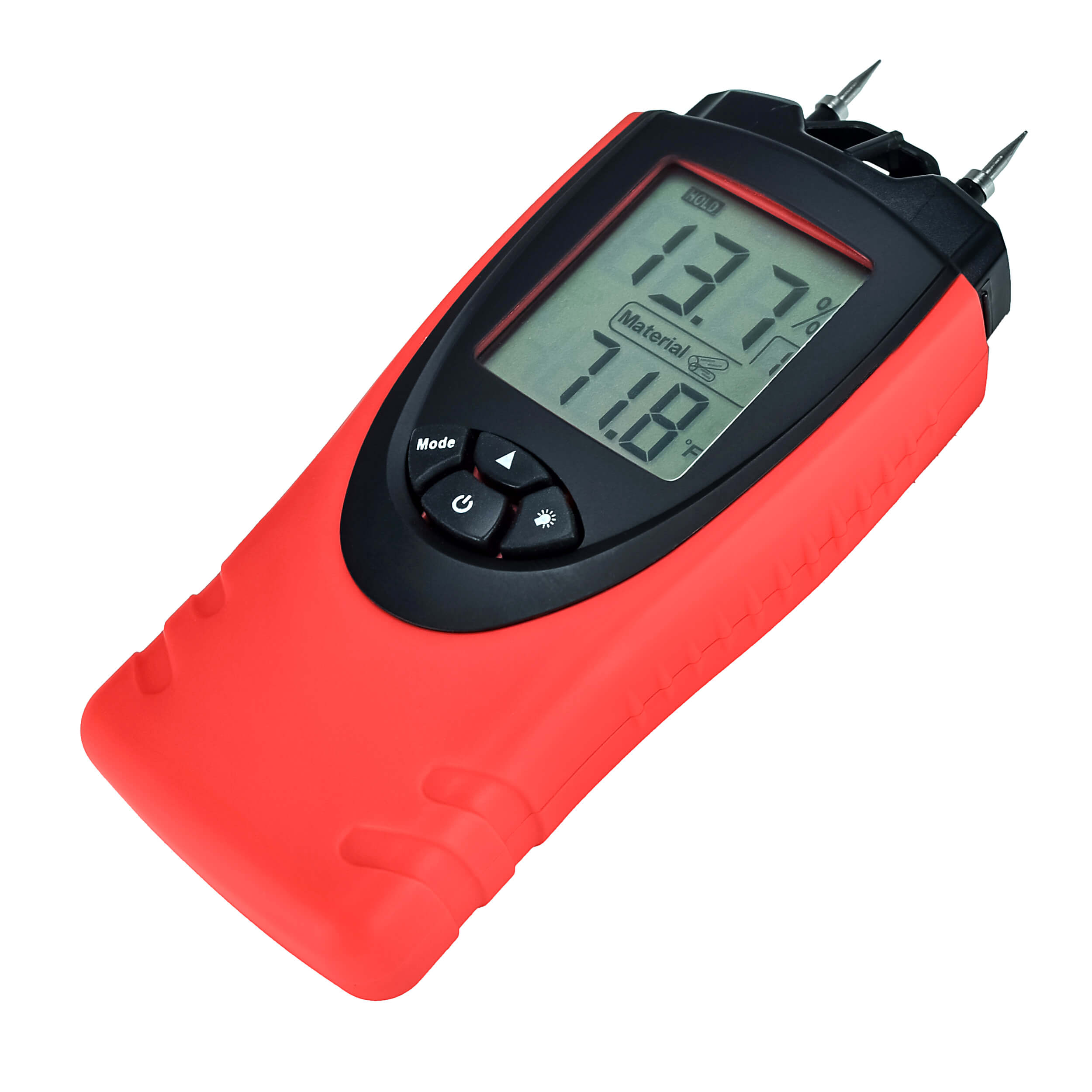Exactly How a Moisture Meter Can Boost Your Building And Construction Projects and Avoid Damages
Exactly How a Moisture Meter Can Boost Your Building And Construction Projects and Avoid Damages
Blog Article
Look Into the Globe of Moisture Meters: Whatever You Need to Know
In the realm of moisture meters exists a world of precision and usefulness that usually goes undetected. These devices, while seemingly uncomplicated, hold a riches of information that can significantly influence different industries and applications. Recognizing exactly how moisture meters operate, the various types available, and their varied uses can clarify their value in making sure quality and performance. By checking out the intricacies of wetness meters, one can uncover a beneficial tool that transcends simple measurement, supplying insights that can make a significant difference in numerous areas.
Exactly How Moisture Meters Work
Moisture meters operate by determining the electric conductivity or capacitance of products to figure out the moisture content present. These meters are invaluable tools throughout numerous industries, including agriculture, building, and woodworking. By making use of different methods such as pinless or pin-type modern technology, moisture meters offer precise readings that assist specialists make educated choices.
Pin-type wetness meters work by placing the sharp pins right into the product being tested. On the other hand, pinless moisture meters use electromagnetic signals to scan a larger area without causing any kind of damages to the material's surface.
Regardless of the approach made use of, dampness meters play a crucial duty in protecting against concerns such as mold and mildew growth, structural damages, or item flaws triggered by excess wetness. Comprehending how these meters job is crucial for making certain the high quality and integrity of products in different applications.
Sorts Of Moisture Meters
Offered the important duty wetness meters play in different industries, it is important to comprehend the different kinds offered to professionals for precisely evaluating dampness levels - Moisture Meter. There are primarily two main sorts of moisture meters: pin-type and pinless wetness meters

On the various other hand, pinless wetness meters use electro-magnetic sensor plates to scan a bigger area of the material without triggering any damage. This kind is ideal for swiftly scanning big areas and is generally utilized for flooring, wall surfaces, and ceilings. Pinless meters are practical for taking readings on completed surfaces without leaving any kind of visible marks.
Both sorts of dampness meters have their advantages and are selected based on the particular needs of the job available. Recognizing the differences in between these kinds is vital for professionals to make precise dampness assessments.
Applications Across Industries
Construction specialists depend on dampness meters to examine the moisture degrees in building products like drywall, concrete, and timber, which is vital for preserving architectural stability and preventing problems like rot or mold. The floor covering industry uses moisture meters to gauge the moisture web content in subfloors before mounting various floor treatments, avoiding expensive problems due to excess moisture. In the food sector, dampness meters are used to keep an dig this eye on and control moisture levels in items such as grains, nuts, and dried out fruits to maintain freshness and high quality.
Tips for Making Use Of Moisture Meters
Use the dampness meter's calibration settings to make certain accurate readings when determining the dampness content in different materials. Calibration is vital for the correct performance of a moisture meter. Before each use, it is a good idea to examine and readjust the calibration setups according to the specific material being evaluated. Furthermore, make certain the meter is readied to the proper dampness array for the Website product you are measuring to obtain the most precise results.
When using a pin-type moisture meter, insert the pins to the ideal deepness advised for the product being tested. This ensures that the moisture readings are taken from the appropriate depth within the material, offering a more exact depiction of its wetness content. For pinless dampness meters, bear in mind to preserve proper call with the material's surface to obtain reliable analyses.
Regularly inspect and replace the batteries in your wetness meter to stop inaccurate analyses due to reduced power. Store the meter in a completely dry and safe area when not in use to lengthen its lifespan and preserve its precision. By adhering to these suggestions, you can make the most of the efficiency of your moisture meter and acquire specific wetness web content measurements throughout various materials.
Maintenance and Calibration
To make certain the precision of moisture content measurements, regular upkeep and calibration of the dampness meter are essential steps in its appropriate performance. Calibration readjusts the dampness meter to ensure that it offers constant and trustworthy outcomes.
Calibration must be carried out periodically, specifically if the moisture meter is made use of regularly or in vital applications where accurate measurements are called for. By calibrating the wetness and maintaining meter regularly, individuals can trust the precision of the moisture web content measurements acquired.
Conclusion

To conclude, dampness meters play an important duty in various markets by accurately measuring the wetness content of materials. Recognizing how these gadgets function, the various types offered, and correct maintenance and calibration are vital for getting dependable outcomes. Whether in construction, production, or agriculture, the use of moisture meters helps guarantee quality assurance and effectiveness in procedures.

In final thought, wetness meters play a critical function in different sectors by precisely determining the wetness web content of products.
Report this page